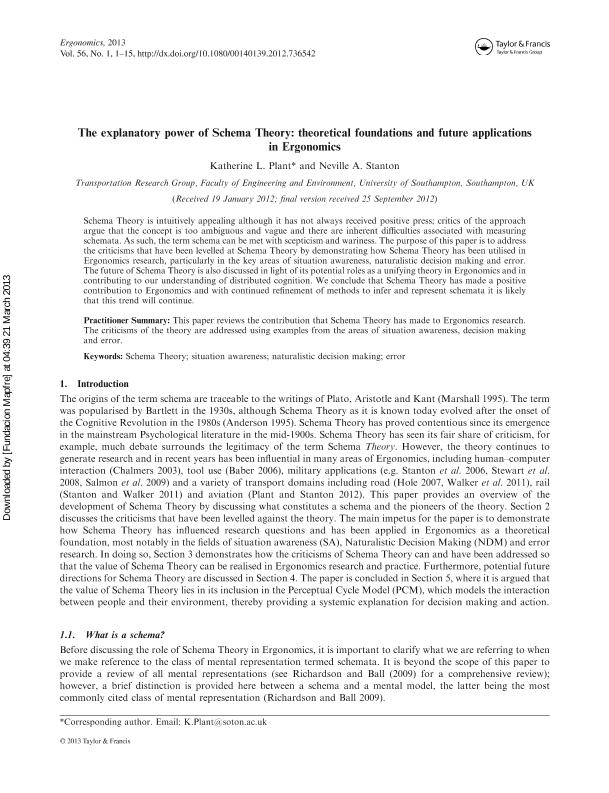The Explanatory power of Schema Theory : theoretical foundations and future applications in Ergonomics

Contenido multimedia no disponible por derechos de autor o por acceso restringido. Contacte con la institución para más información.
| Tag | 1 | 2 | Value |
|---|---|---|---|
| LDR | 00000cab a2200000 4500 | ||
| 001 | MAP20130010076 | ||
| 003 | MAP | ||
| 005 | 20130321173337.0 | ||
| 008 | 130321e20130107esp|||p |0|||b|spa d | ||
| 040 | $aMAP$bspa$dMAP | ||
| 084 | $a875 | ||
| 100 | 1 | $0MAPA20130003856$aPlant, Katherine L. | |
| 245 | 1 | 4 | $aThe Explanatory power of Schema Theory$b: theoretical foundations and future applications in Ergonomics$cKatherine L. Plant, Neville A. Stanton |
| 520 | $aSchema Theory is intuitively appealing although it has not always received positive press; critics of the approach argue that the concept is too ambiguous and vague and there are inherent difficulties associated with measuring schemata. As such, the term schema can be met with scepticism and wariness. The purpose of this paper is to address the criticisms that have been levelled at Schema Theory by demonstrating how Schema Theory has been utilised in Ergonomics research, particularly in the key areas of situation awareness, naturalistic decision making and error. The future of Schema Theory is also discussed in light of its potential roles as a unifying theory in Ergonomics and in contributing to our understanding of distributed cognition. We conclude that Schema Theory has made a positive contribution to Ergonomics and with continued refinement of methods to infer and represent schemata it is likely that this trend will continue. | ||
| 773 | 0 | $wMAP20100019818$tErgonomics : the international journal of research and practice in human factors and ergonomics$dOxon [United Kingdom] : Taylor & Francis, 2010-$x0014-0139$g07/01/2013 Volumen 56 Número 1 - enero 2013 , p. 1-15 |

